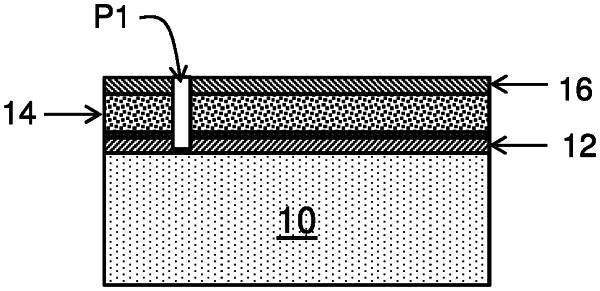| CPC H01L 31/0463 (2014.12) [H01L 31/1888 (2013.01); H01L 31/0322 (2013.01)] | 16 Claims |

|
1. A method of manufacturing a photovoltaic product having a plurality of photovoltaic cells, the method comprising:
depositing a stack including:
a first electrode layer,
a second electrode layer, and
a photovoltaic layer arranged between the first and the second electrode layer; and
partitioning the stack into respective lateral portions, the partitioning at least including forming a trench extending through the second electrode layer and the photovoltaic layer to expose the first electrode layer,
wherein the forming a trench at least includes a first irradiation stage and a second irradiation stage,
wherein the first irradiation stage comprises using a first laser beam having:
a first spotsize in a direction transverse to the trench to be formed, and
a first wavelength for which the photovoltaic layer has a relatively high absorption coefficient as compared to that of the second electrode layer,
wherein, during the first irradiation stage, the first laser beam impinges on an area of the photovoltaic layer, resulting in:
a local evaporation of photovoltaic material from the area resulting in a vaporized photovoltaic material, and
a melting of photovoltaic material in the neighborhood of the area, the melting resulting further in reducing an adhesion of the second electrode layer to the photovoltaic layer,
wherein a pressure of the vaporized photovoltaic material contributes to detaching the second electrode layer from the photovoltaic layer therein without removing the second electrode layer,
wherein the second irradiation stage comprises removing material of the second electrode layer and of the photovoltaic layer in the neighborhood, using a second laser beam with having:
a second spotsize in the direction transverse to the trench that is greater than the first spotsize, and
a second wavelength for which the photovoltaic layer has a relatively low absorption coefficient as compared to that of the second electrode layer.
|